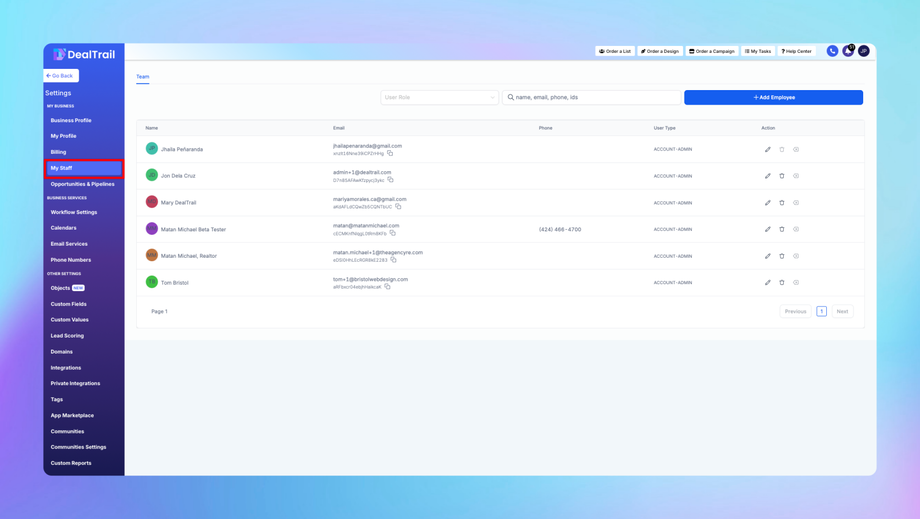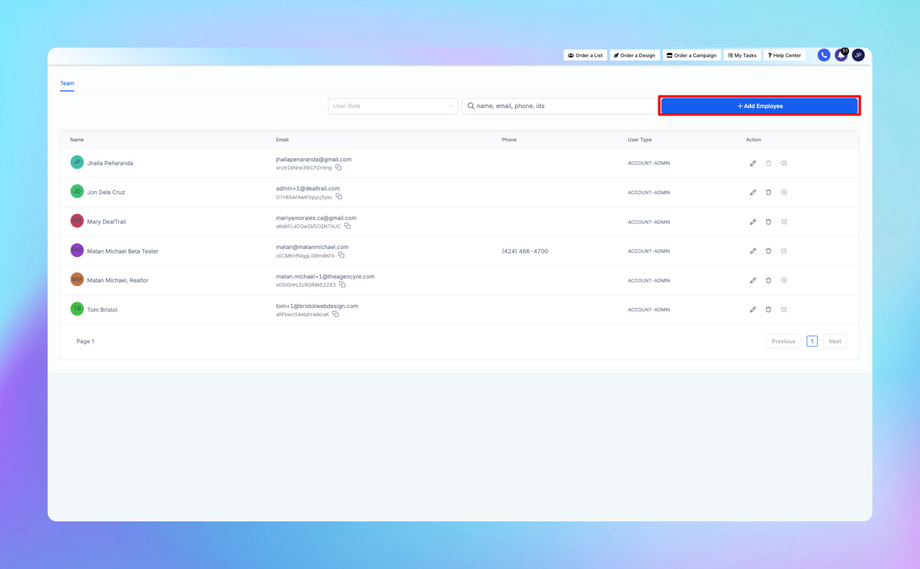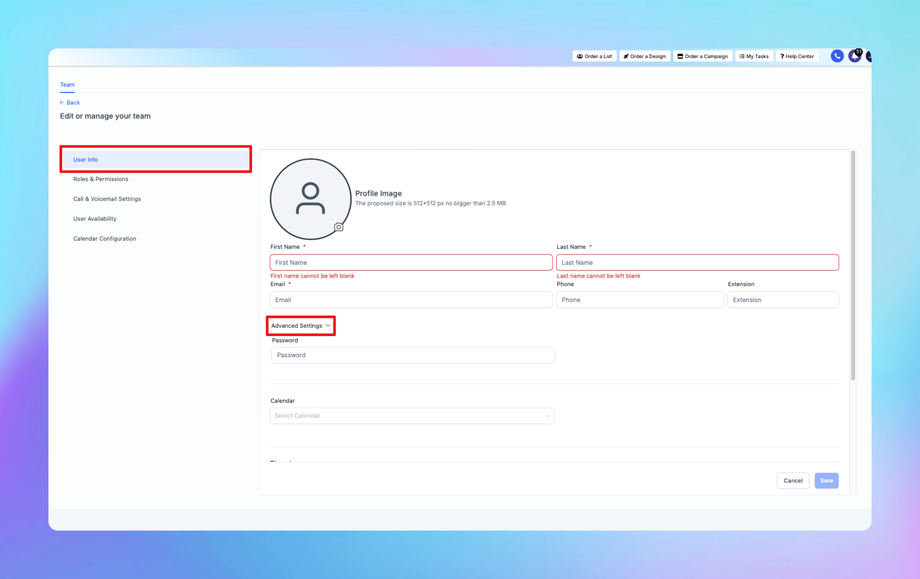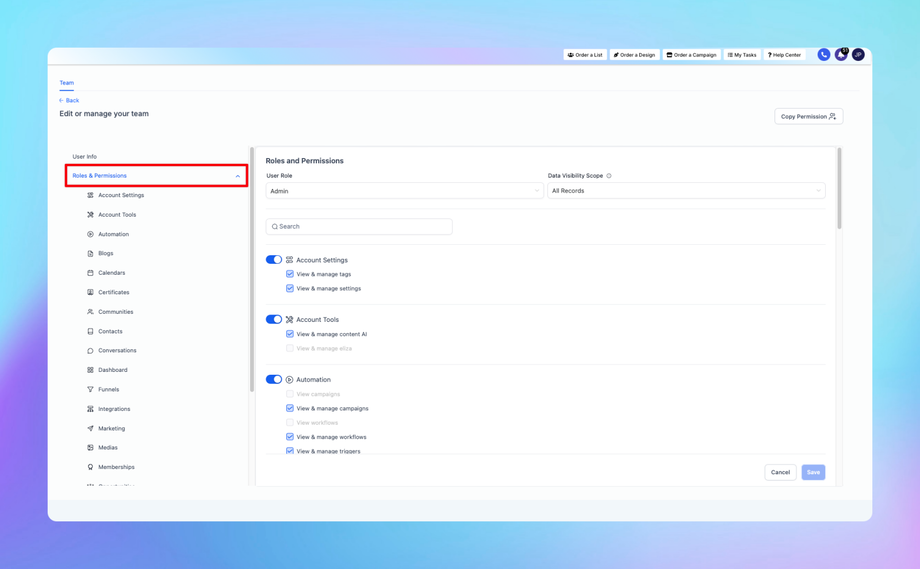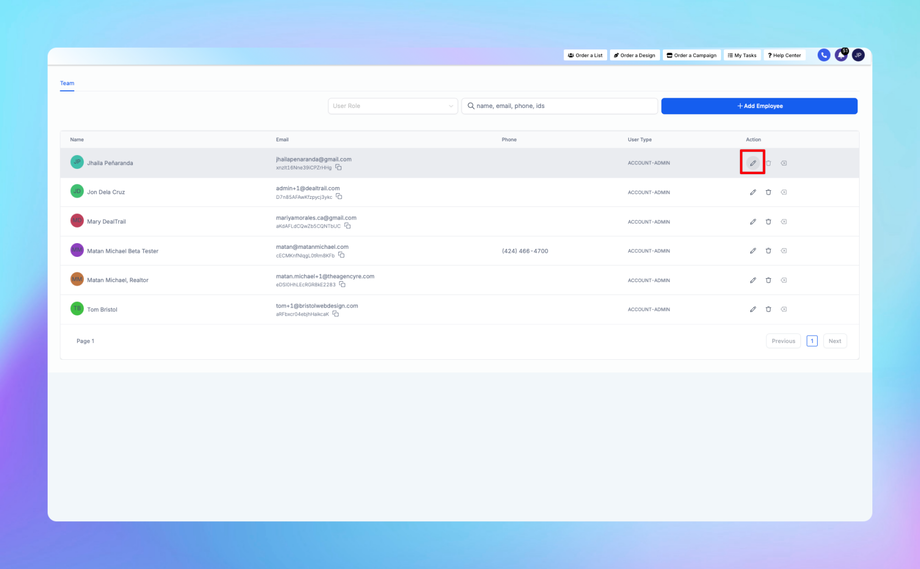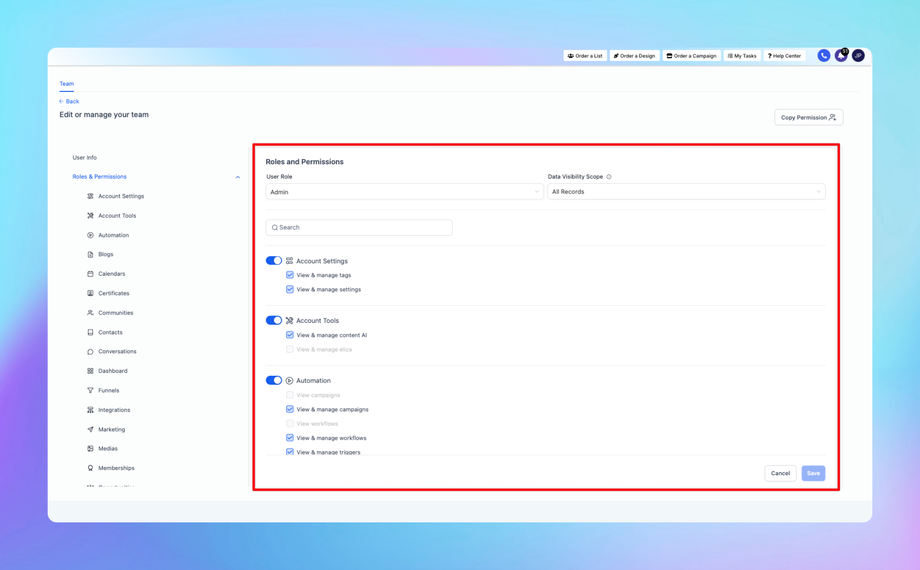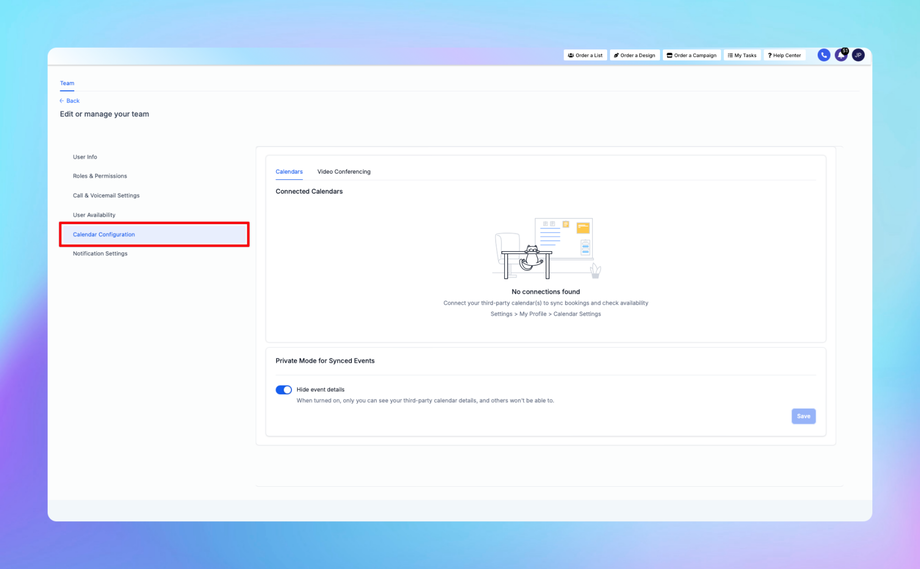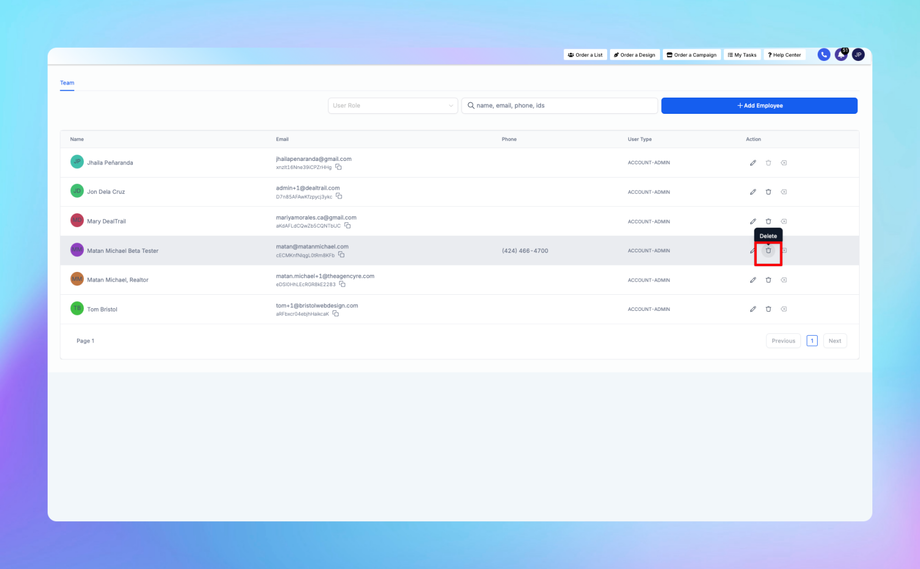🧑💻 My Staff
The My Staff section in DealTrail is where you manage team members, their roles, and access permissions for your agency or location(s). Here’s a detailed guide:
1. Adding Staff Members
Purpose: Add new users to your account with appropriate roles and permissions.
Steps to Add Staff:
1. Navigate to Settings > My Staff.
2. Click Add Employee.
3. Fill in the following details:
User Information:
• Full Name
• Email Address (used for login)
• Phone Number (optional)
• Temporary Password (the user can update this upon login)
Role and Permissions:
• Select User Type:
Agency Admin: Full access across all accounts and features.
Agency User: Limited access; permissions must be specified.
Location Admin: Full access to a specific location’s settings and data.
Location User: Limited access to specific tasks within a location.
Set specific permissions like:
• View Contacts
• Manage Pipelines
• Send Campaigns
• Billing Access
4. Assign the staff member to one or multiple locations.
5. Click Save.
2. Managing Staff Permissions
Purpose: Control what actions team members can perform in DealTrail.
Steps to Edit Permissions:
1. Navigate to Settings > My Staff.
2. Select a staff member from the list and click edit button.
3. Under Roles & Permissions, toggle the specific access rights:
General Permissions:
• View/Manage Contacts
• Create/Edit Opportunities
• Access Reports
• Manage Automations
Billing Access:
• Enable or disable subscription and wallet management.
• Custom Permissions: Configure specific tasks based on staff roles.
4. Click Save Changes to update.
3. Assigning Calendar Links to Staff
Purpose: Allow staff members to manage their calendars for bookings and appointments.
Steps to Set Up Calendar Links:
1. Go to Settings > My Staff.
2. Click on a staff member’s profile.
3. Under the Calendar Configuration tab, link a personal calendar or create a new booking calendar.
Options:
• Google Calendar
• Outlook Calendar
4. Enable availability settings and integrate with workflows for appointment scheduling.
4. Deactivating or Removing Staff
Purpose: Manage active staff and disable access for former team members.
Steps to Deactivate Staff:
1. Navigate to Settings > My Staff.
2. Select the staff member to be deactivated.
3. Click Deactivate or Delete Employee:
• Deactivate: Temporarily removes access but retains user data.
• Delete: Permanently removes the user and their associated data.
Note: Always confirm before deleting staff accounts to avoid losing critical information.
5. Viewing Staff Performance
Purpose: Track staff activity and performance metrics.
Steps to Monitor Performance:
1. Go to Settings > My Staff.
2. Open the Activity Log for a specific user.
3. View metrics like:
• Tasks completed
• Opportunities created or updated
• Messages sent
• Appointments scheduled
4. Export activity logs for detailed reporting.
Common Features in My Staff
1. Two-Factor Authentication (2FA):
Enable 2FA for staff accounts to enhance security. Navigate to Settings > Security to configure.
2. Email and Notification Preferences:
Customize how staff receive notifications for tasks, appointments, or campaigns. Adjust settings in their profiles.
FAQs for My Staff
1. How do I reset a staff member’s password?
• Navigate to Settings > My Staff.
• Select the staff member and click Reset Password. The user will receive an email with instructions.
2. Can a staff member access multiple locations?
• Yes, during the setup or edit process, assign them to the necessary locations.
3. What happens if a staff member is deactivated?
• They lose login access, but their historical data (e.g., tasks, messages) remains intact.
4. How do I assign leads to specific staff members?
• Use workflows or manual assignment in the Contacts or Opportunities sections.
5. Can I track a staff member’s logins?
• Yes, go to Settings > My Staff > Activity Log to see their login history and activities.
Staff Management Best Practices
1. Regularly Review Permissions:
Periodically check staff access levels to ensure compliance with agency policies.
2. Use Role-Specific Training:
Provide tailored training based on staff roles, such as admin-specific guides or location-user tasks.
3. Leverage Reports:
Use staff activity logs and performance reports to identify top performers and areas for improvement.
4. Backup Staff Data:
Before deactivating or deleting staff accounts, ensure critical data (e.g., leads, tasks) is reassigned.


